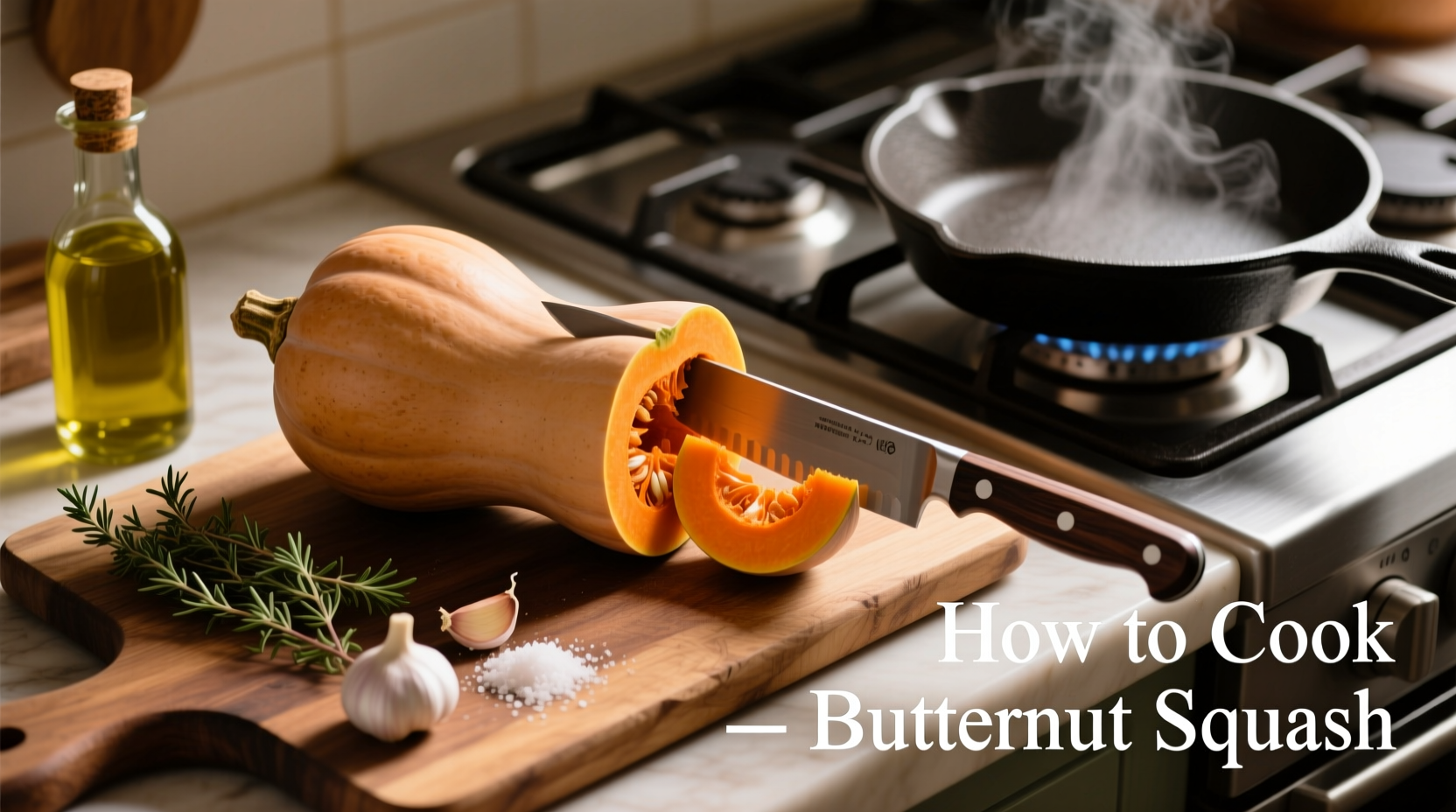Mastering butternut squash preparation transforms this versatile winter vegetable from intimidating to irresistible. As a professional chef who's taught thousands of home cooks, I've discovered that understanding the proper techniques unlocks butternut squash's natural sweetness and creamy texture. Whether you're a kitchen novice or experienced cook, this comprehensive guide delivers professional methods that guarantee perfect results every time—no special equipment required.
Understanding Butternut Squash Basics
Before you start cooking, selecting quality produce matters. Choose squash with a firm, uniformly beige rind without soft spots or cracks. The USDA FoodData Central confirms butternut squash delivers 457% of your daily vitamin A needs per cup, making it a nutritional powerhouse. Store uncut squash in a cool, dark place for up to two months—never refrigerate whole squash as cold temperatures degrade flavor.
Safe Preparation: Cutting and Peeling Techniques
Many home cooks struggle with butternut squash's tough exterior. Follow this professional method:
- Microwave whole squash for 2-3 minutes to soften skin slightly
- Cut off stem and bottom ends to create stable flat surfaces
- Stand squash upright and carefully slice downward to remove skin
- Cut in half crosswise at the neck-body junction
- Scoop seeds from the bulbous end with a spoon (save for roasting!)
- Cube flesh into uniform 1-inch pieces for even cooking
For safety, always use a sharp chef's knife on a stable cutting board. If you lack confidence, purchase pre-cubed squash (though it's typically 30% more expensive).

Optimal Cooking Methods Compared
| Cooking Method | Time Required | Texture Result | Best For |
|---|---|---|---|
| Roasting | 25-35 minutes | Caramelized edges, creamy interior | Main dishes, side courses |
| Boiling | 12-15 minutes | Uniformly soft | Purees, soups |
| Steaming | 15-20 minutes | Firm yet tender | Preserving nutrients |
| Instant Pot | 8 minutes + release | Perfectly even | Time-pressed cooks |
Detailed Cooking Instructions
Perfect Roasted Butternut Squash (Most Flavorful Method)
This professional technique maximizes flavor through controlled caramelization:
- Preheat oven to 400°F (200°C) with rack in center position
- Toss 3 cups cubed squash with 1.5 tbsp olive oil, 1 tsp salt, and 0.5 tsp black pepper
- Spread in single layer on parchment-lined baking sheet
- Roast 25-30 minutes, flipping halfway, until deeply golden and fork-tender
- Optional: Add 1 tbsp maple syrup during last 10 minutes for enhanced sweetness
According to food science research from Serious Eats, the Maillard reaction at 300°F+ creates complex flavor compounds that boiling cannot achieve. This explains why roasting consistently produces superior taste.
Quick Boiling Method (Best for Purees)
For silky-smooth soups and purees:
- Bring 4 cups salted water to rolling boil
- Add cubed squash, return to simmer
- Cook 12-15 minutes until knife slides in easily
- Drain thoroughly before pureeing to prevent watery texture
Flavor Pairing Science
Understanding flavor chemistry elevates your butternut squash dishes. The vegetable's natural sweetness complements:
- Savory pairings: Sage, thyme, and rosemary (volatile compounds enhance earthy notes)
- Sweet accents: Cinnamon, nutmeg, and allspice (mimic squash's natural terpene compounds)
- Texture contrasts: Toasted pecans or pepitas (adds crunch against creamy base)
- Acid balance: A splash of apple cider vinegar or lemon juice before serving
3 Simple Recipe Applications
Weeknight Roasted Squash Bowl
Toss roasted cubes with cooked quinoa, dried cranberries, arugula, and balsamic vinaigrette for a complete meal ready in 30 minutes.
Creamy Butternut Soup
Saute onion in 1 tbsp butter, add 4 cups boiled squash and 2 cups vegetable broth. Simmer 10 minutes, then blend until smooth. Stir in 0.25 cup coconut milk before serving.
Squash & Kale Sauté
After roasting, heat 1 tbsp olive oil in same pan. Add roasted squash, 2 cups chopped kale, and 2 minced garlic cloves. Sauté 3-4 minutes until kale wilts.
Storage and Reheating Guidelines
Proper storage maintains quality and food safety. The Food Safety and Inspection Service recommends:
- Refrigerate cooked squash within 2 hours in airtight containers
- Consume within 4 days for best quality
- Freeze portions in freezer bags for up to 12 months
- Reheat in oven at 350°F (175°C) to restore texture (microwaving makes squash mushy)
Frequently Asked Questions
Can I eat butternut squash skin?
While technically edible, butternut squash skin is tough and fibrous. Roasting small varieties like honeynut squash makes the skin tender enough to eat, but standard butternut requires peeling for enjoyable texture. Save peels for vegetable stock instead of discarding.
Why is my roasted butternut squash watery?
Excess moisture typically comes from overcrowding the baking sheet or insufficient oil. Spread cubes in a single layer with space between pieces, and use enough oil (1.5 tbsp per 3 cups) to create a moisture barrier during roasting. Patting cubes dry before oiling also helps.
How do I prevent butternut squash from browning during prep?
Like apples, butternut oxidizes when exposed to air. Toss cut pieces in water with 1 tbsp lemon juice or vinegar. For longer prep times, keep in cold acidulated water until ready to cook, then drain and pat dry thoroughly before cooking.
What's the fastest way to cook butternut squash?
The microwave method delivers fastest results: Pierce whole squash with fork, microwave 5 minutes, then cut and scoop seeds. Microwave chunks 8-10 minutes until tender. For pre-cubed squash, microwave 5-7 minutes. While not as flavorful as roasting, this method works well when time is critical.
Can I freeze cooked butternut squash?
Yes, cooked butternut squash freezes exceptionally well. Cool completely, then portion into freezer bags with as much air removed as possible. Lay flat for quick freezing. Use within 12 months. Thaw overnight in refrigerator before reheating in oven for best texture retention.











 浙公网安备
33010002000092号
浙公网安备
33010002000092号 浙B2-20120091-4
浙B2-20120091-4